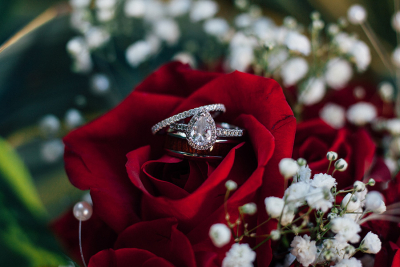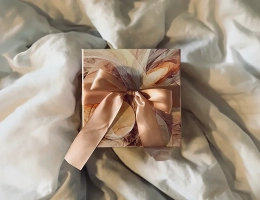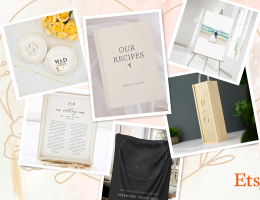What contributes to making the perfect engagement ring? Diamonds? Gold? If you are not sure how to answer this question then don’t panic, we’re here to help. There are countless combinations of styles and designs on offer, meaning your perfect engagement ring is out there, you just need to know what you are looking for.
There are two key components to any standard engagement ring – the metal band and the gemstone. Most jewellers allow you to customise your ring to suit both your partner’s style and your given budget. Below, we run through some of the differences between the most popular metal types and gemstones on the market to help you find your perfect fit.
Types of metal
Traditionally, there are four different types of metal used for engagement rings: platinum, white gold, yellow gold and rose gold. There are pros and cons for each, but your decision ultimately depends on your partner’s personal style, their lifestyle and your budget.
White gold and platinum are often interchangeable, but there are a few key differences. Whilst white gold is a man-made alloy consisting of yellow gold and other metals, platinum is a naturally occurring metal and is far more valuable.
In the short term, white gold will seem the more desirable choice when shopping on a budget. However, white gold is far more easily damaged than platinum, and will likely need regular maintenance. This guide on white gold recommends having your ring recoated with rhodium every so often, and this process can actually make it the more expensive choice in the long term.
Historically, yellow gold has been the popular choice for both engagement rings and wedding bands. The fashionable colour of yellow gold combined with the relative ease with which it’s maintained makes it a favourable choice amongst couples. However, in recent years, rose gold has emerged as a sought-after alternative to the more classic styles, and is often more affordable than the others mentioned above.
Types of gemstone
When you think of engagement rings, you likely think of diamonds. This highly desirable gem has been synonymous with marriage and proposals since a marketing campaign in the mid-1900s by De Beers. Prior to the Second World War, diamonds were very rarely found in engagement rings, with only 10% containing the precious gem. Fast forward to the end of the 20th century, and this figure rose to an astonishing 80%.
However, in recent years, modern couples have driven a shift to alternative gemstones such as sapphires and emeralds. If you have ventured into the diamond market, you have likely become familiar with the 4Cs used to determine the quality of the diamond. These 4Cs (colour, cut, clarity, carat) are largely applicable to other gems too, with colour typically being the most important when determining desirability.
The alternative gemstone bandwagon has gained momentum in recent years, accelerated by media coverage of some particularly famous rings. For instance, Carrie Symonds, wife of Boris Johnson, possesses an oval-cut emerald ring, whilst Kate Middleton’s 12-carat sapphire ring has been seen all over the world.
What both of these rings have in common is the central jewels are both surrounded by smaller diamonds. Despite being more costly, this is a clever way to combine the elegance of diamonds with the vivid colouring of alternative gemstones.
Choosing the right type for you
As mentioned above, there are several factors that must be considered when determining which engagement ring is right for you. Most importantly, perhaps, is your budget. Once you have decided upon your budget, retailers will be able to show you what they can offer within your price range.
For those on a tighter budget, compromises will likely have to be made, but this doesn’t necessarily equate to a reduction in quality. For instance, instead of a larger carat sapphire, you might look for a slightly smaller gem or even a less expensive cut, such as the cabochon cut.
It is also vital to consider the style of your partner. This will help you to narrow down both the desired cut of the gem as well as the most suitable type of metal. For example, a platinum band with a more durable gemstone would be suited to someone with an active lifestyle who is more at risk of damaging the ring.





